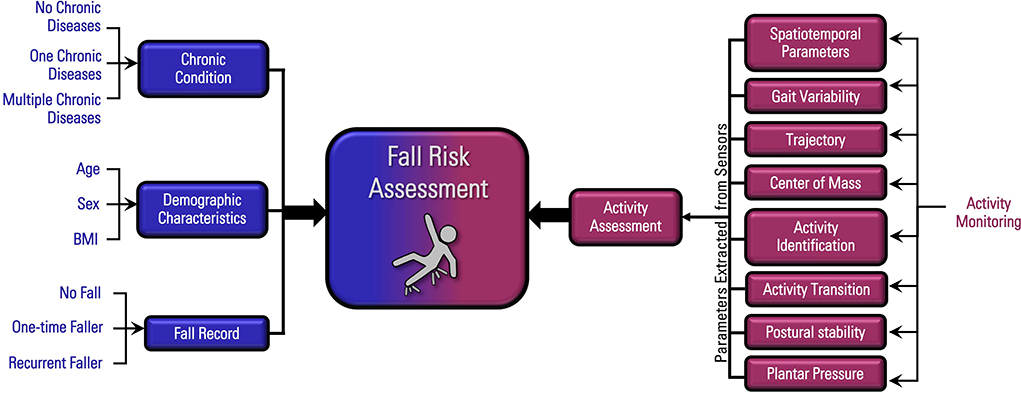What Does Dementia Fall Risk Mean?
Table of ContentsAll about Dementia Fall RiskThe Single Strategy To Use For Dementia Fall RiskMore About Dementia Fall RiskOur Dementia Fall Risk Ideas
A fall risk assessment checks to see how most likely it is that you will fall. It is primarily done for older grownups. The analysis typically consists of: This consists of a series of inquiries about your total health and if you have actually had previous drops or troubles with equilibrium, standing, and/or strolling. These tools examine your strength, balance, and stride (the way you walk).STEADI includes screening, analyzing, and treatment. Interventions are suggestions that might minimize your risk of dropping. STEADI includes three actions: you for your threat of succumbing to your threat elements that can be improved to attempt to stop drops (as an example, balance troubles, impaired vision) to decrease your threat of dropping by using efficient approaches (for instance, supplying education and sources), you may be asked a number of concerns consisting of: Have you fallen in the past year? Do you feel unsteady when standing or walking? Are you fretted about dropping?, your company will check your toughness, balance, and stride, using the complying with loss assessment devices: This examination checks your gait.
If it takes you 12 secs or more, it may suggest you are at higher threat for an autumn. This examination checks stamina and balance.
The positions will certainly get harder as you go. Stand with your feet side-by-side. Move one foot halfway onward, so the instep is touching the huge toe of your various other foot. Move one foot completely in front of the various other, so the toes are touching the heel of your other foot.
The 6-Second Trick For Dementia Fall Risk
Many drops take place as an outcome of numerous contributing factors; consequently, handling the risk of dropping begins with determining the elements that add to fall risk - Dementia Fall Risk. Some of the most pertinent risk aspects consist of: History of previous fallsChronic medical conditionsAcute illnessImpaired gait and equilibrium, lower extremity weaknessCognitive impairmentChanges in visionCertain high-risk medicines and polypharmacyEnvironmental elements can also raise the risk for falls, including: Inadequate lightingUneven or damaged flooringWet or unsafe floorsMissing or harmed hand rails and order barsDamaged or incorrectly equipped devices, such as beds, wheelchairs, or walkersImproper usage of assistive devicesInadequate supervision of individuals living in the NF, consisting of those who show hostile behaviorsA effective fall danger management program calls for a comprehensive clinical assessment, with input from all members of the interdisciplinary group
.png)
The care strategy ought to additionally include treatments that are system-based, such as those that promote a risk-free setting (appropriate lighting, hand rails, get bars, etc). The performance of the interventions should be examined periodically, and the treatment strategy revised as required to mirror modifications in the fall danger analysis. Executing a fall threat administration system utilizing evidence-based finest technique can reduce the frequency basics of drops in the NF, while restricting the capacity for fall-related injuries.
An Unbiased View of Dementia Fall Risk
The AGS/BGS guideline suggests evaluating all grownups matured 65 years and older for fall risk every year. This testing contains asking individuals whether they have actually dropped 2 or even more times in the past year or sought clinical focus for a fall, or, if they have not dropped, whether they feel unsteady when strolling.
People who have actually fallen when without injury must have their equilibrium and stride assessed; those with gait or equilibrium abnormalities need to obtain extra assessment. A background of 1 fall without injury and without gait or equilibrium problems does not require further analysis beyond ongoing yearly loss risk testing. Dementia Fall Risk. A fall danger assessment is required as component of the Welcome to Medicare evaluation

The Facts About Dementia Fall Risk Uncovered
Documenting a falls background is one of the quality signs for fall prevention and monitoring. Psychoactive medicines in certain are independent forecasters of falls.
Postural hypotension can usually be eased by decreasing the dose of blood pressurelowering medications and/or stopping medicines that have orthostatic hypotension as a negative effects. Usage of above-the-knee support pipe and copulating the head of the bed boosted might also reduce postural reductions in high blood pressure. The suggested aspects of a fall-focused health examination are received Box 1.

A pull time higher than or equivalent to 12 secs recommends high fall danger. The 30-Second Chair Stand examination evaluates reduced extremity stamina and balance. Being not able to stand from a chair of knee height without using one's arms indicates increased loss danger. The 4-Stage Balance test evaluates static equilibrium by having the person stand in 4 positions, each considerably more difficult.